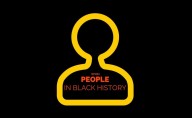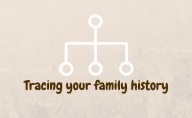Brief History of Jamaica
Jamaica is the third-largest island of the Greater Antilles, in the Caribbean. The original inhabitants of Jamaica are the Arawaks, believed to have arrived from South America some 2,500 years ago. Although there is no official figure, it has been suggested that there were up to 100,000 Arawaks, when the Spanish, headed by Christopher Columbus, arrived in 1494.
Spain sent Juan de Esquivel to establish a settlement in 1509, which marked the beginning of Spain’s colonization of Jamaica. The Spanish established ‘Sevilla la Nueva’ on the northern part of the island, as their centre but transferred in 1523 for ‘Saint Jago de la Vega’ (now Spanish Town) in the south. Spanish settlers began to arrive in Jamaica, bringing with them foreign disease as well as overworking, and poor conditions. By the late 16th century the Arawak population had been completely wiped out, by the Spanish.
On May 10, 1655, an English expedition, commanded by Admiral William Penn and General Robert Venables landed on the coastal town of Passage Fort, in Saint Catherine. Their intended expedition was to take control of Hispanola, which turned out to be heavily defended, and they were unsuccessful. They instead turned the island of Jamaica, where the Spanish were unable to withstand the attack. The Spanish, conceded defeat at fled too Cuba, but not before they freed their slaves, who left the capital for the hills, creating the Maroon society.
In 1664 Sir Thomas Modyford, a sugar plantation and slave owner in Barbados, was appointed first governor of Jamaica, for the British. Modyford began expanding plantation agriculture, with cacao and sugarcane. By the early 1700s sugar estates worked by black slaves were established throughout the island, and plantation profits dominated the economy. The slave trade grew, and both males and females of all ages, were labourers on the plantations, domestic servants, as well as skilled tradesmen, technicians, and traders.
It has been estimated that more than 1 million people were enslaved and were transported directly from Africa to Jamaica during this time. Some were then re-exported to other islands and America. The Akan, Ga, and Adangbe from the north-western coastal region, the Gold Coast (modern Ghana) dominated the slave trade to the island until the late 1770’s slaves were imported from other parts of Africa. Igbos from the Bight of Biafra (southern Nigeria) and Kongos from Central Africa.
Maroon and slave rebellions made keeping control difficult for the English, the maroon communities grew, and many escaped slaves continued to join them. There were a number of maroon communities, but two main groups emerged, the Leeward Maroons in the south central, area of the island and the Windward Maroons in the north and northeast. Queen Nanny being remembered today as one of the great leaders of the rebellions. They were highly skilled ‘guerrilla’ fighters, with superior knowledge of the terrain, and carried out relentless ambushing campaigns, mostly successful, which eventually forced the English in 1739, to grant autonomy (the right of self-government-The Maroons were given their freedom and land. They were to govern themselves, and in return support the British authorities in capturing runaways from the plantations), ending the First Maroon War
The Second Maroon War started in July 1795, when maroon community of Trelawny Town (now Flagstaff) revolted against indignities and injustice they still suffered by the authorities. The British flogged a Trelawny Town Maroon in Montego Bay for stealing. The Maroons, were finally defeated when British imported bloodhounds and Amerindians to track them down.
The surviving maroon communities are Nanny Town; Scott’s Hall in the present-day northern parish of Saint Mary; and Accompong (named for Cudjoe’s brother, who had distinguished himself as a military leader with the Windward Maroons) in the south-western parish of Saint Elizabeth.
For the decades following, injustice and tensions still ran high, until the 1831 Baptist War otherwise known as the Christmas revolution or the Great Jamaican Slave Revolt. Initial intentions for a peaceful resistance, led by ‘Daddy’ Samuel Sharpe, a Baptist deacon and domestic slave, failed, and it became a 10 day rebellion that began in Saint James and spread throughout western Jamaica. Thousands of maroons and escaped slaves razed plantations and murdered planters. The English unable to take control of the uprising by force, made a number of false promises of freedom, so the Maroons lay down their arms. In retaliation all who were thought to have been associated including white missionaries, were either imprisoned or killed. Hundreds of Blacks, including Sharpe, were executed.
Life in Jamaica during the 1860s saw some ex-slaves doing well, while others were starving. The Morant Bay Rebellion was a result of the arrest and imprisonment on October 7, 1865 of a black man for trespassing. There was widespread anger, and a group led by Paul Bogle, on October 11, to the court house in Spanish Town to speak with Governor Eyre. They were met with gunfire from volunteer militia groups. In the days that followed the ‘rebels’ roamed the countryside. The reprisals were harsh, Bogle was captured and hung, along with anyone thought to have been involved.
When the news reached England, a public outcry intensified antislavery pressure on the government by the Quakers (Society of Friends) in Britain, led by Thomas Buxton, Thomas Clarkson, William Wilberforce, and Stephen Lushington.
From 1838 to 1917, thousands of Indians and Chinese went to Jamaica as indentured labourers. Other ethnic groups including Syrians, Lebanese, and Jews By 1958, Jamaica became a key member of the British-sponsored West Indies Federation. This diversity became the foundation of Jamaica’s constitution at independence in 1962 with the island’s motto becoming ‘Out of Many, One People’.
Click here or Jamaica History Timeline
Find out more about the history of the Caribbean Islands
Barbados | Dominica | Grenada | Jamaica | St Lucia | Trinidad | Tobago



